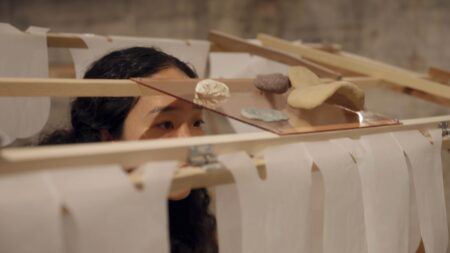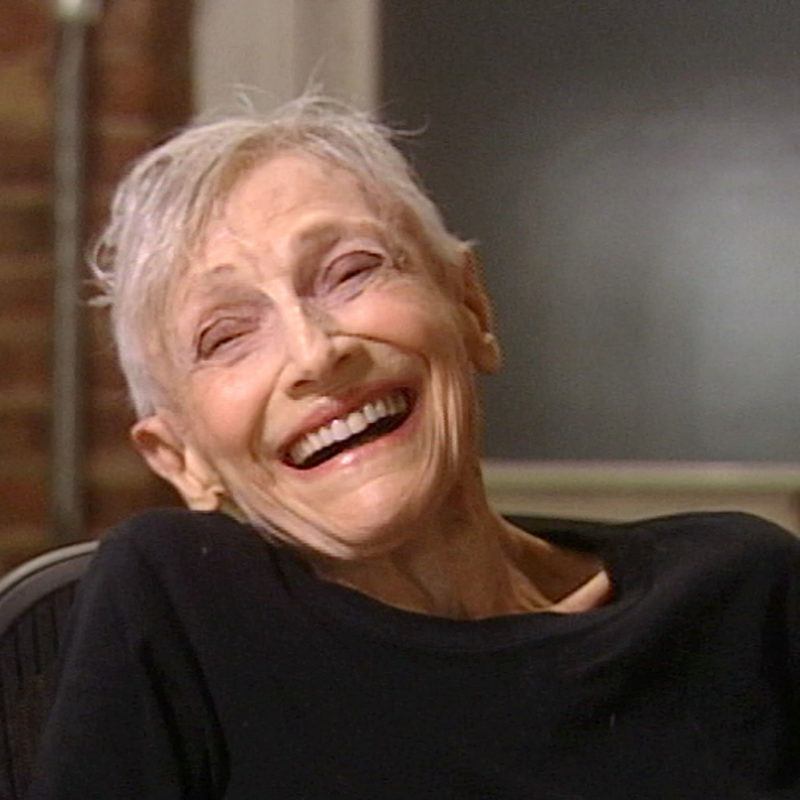Continue playing
(Time remaining: )
Play from beginning
Continue playing "{{ controller.videos[controller.getVideo(controller.currentVideo)].segmentParentTitle}}"
{{controller.videos[controller.getVideo(controller.currentVideo)].title}} has ended.
CollaborationNancy Spero
Filmed in 2006 and 2007 at her New York City studio, Nancy Spero (1926–2009) discusses how collaborations with other artists activated her work by allowing for greater variation. In working with others and drawing from an extensive collection of acquired and original figural images, Spero was able to produce art late into her life.
Spero’s piece for the Venice Biennale, Maypole / Take No Prisoners (2007), is shown in process as one of her severed head images is printed on metal by an artist who is encouraged to alter the reproduction so that it looks “war-torn and bloody.”
More information and creditsCredits
Producer: Ian Forster. Consulting Producer: Wesley Miller & Nick Ravich. Interview: Susan Sollins. Camera: Nick Ravich & Joel Shapiro. Sound: Roger Phenix & Merce Williams. Editor: Morgan Riles. Artwork Courtesy: Nancy Spero. Special Thanks: Amanda Donnan, Mary-Beth Gregg & Samm Kunce. Theme Music: Peter Foley.
Closed captionsAvailable in English, German, Romanian, Italian, Japanese, Korean, Chinese, Italian
Through the Art21 Translation Project, multilingual audiences from around the globe can contribute translations, making Art21 films more accessible worldwide.
Interested in showing this film in an exhibition or public screening? To license this video please visit Licensing & Reproduction.
Nancy Spero is a pioneer of feminist art. Her work since the 1960s is an unapologetic statement against the pervasive abuse of power, Western privilege, and male dominance. Executed with a raw intensity on paper and in ephemeral installations, her work often draws its imagery and subject matter from current and historical events. Spero samples from a rich range of visual sources of women as protagonists to create figures that co-exist in nonhierarchical compositions on monumental scrolls, visually reinforcing principles of equality and tolerance.
Collaboration
Jenny Holzer
Laylah Ali
William Kentridge
Nancy Spero
Nancy Spero


